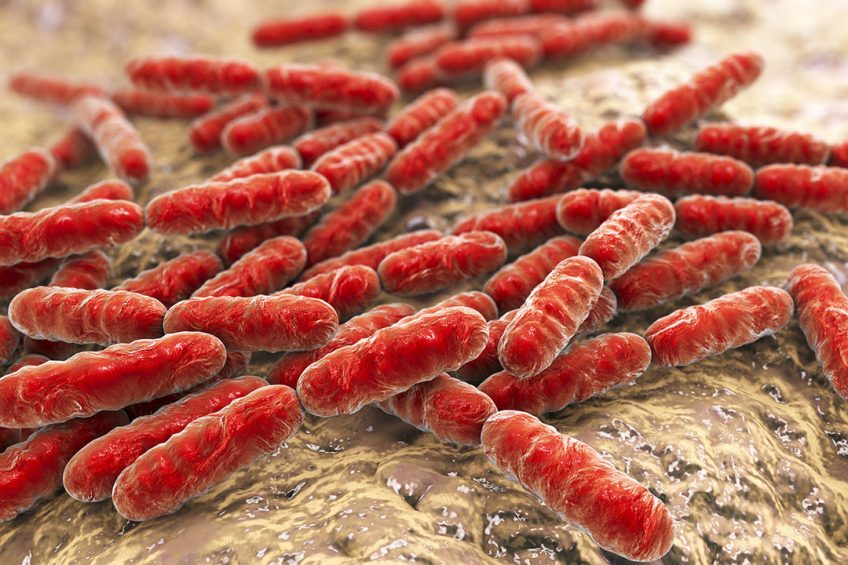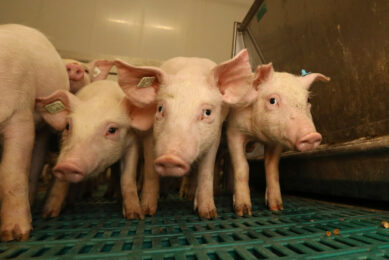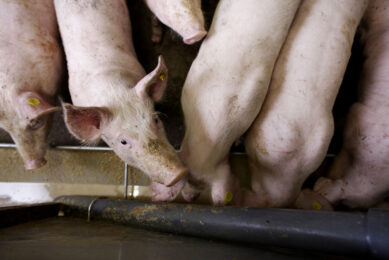Pig gut health: Exposing some hidden corners

In times of fewer antibiotics or zinc oxide, the theme of gut health is ‘hot’ in pigs. Sometimes innovative feed ingredients or additives may have a positive impact, others lose their benefit once management is top-notch as well. Pig management expert John Gadd summarises his views.
Time to reflect on past subjects, especially those peripheral ones which seem to have escaped media coverage for one reason or another. I’ve been involved in pig unit advice now for more years than I care to admit, and one eventually comes across subjects which have given the same results, both positive and negative which have stood the test of time.
One advises against the negative ones of course, and explores the positive experiences. Here are a few which have caught my attention over the years. They have seemed to work. They have not yet found their way firmly into the pig textbooks. Touched on maybe, but not explained in detail.
Probiotics
There has been much promotion and discussion on gut health recently, what the scientist calls the ‘microbiome’ – the latest new word for the microbial population of the intestine, along with ‘nutribiosis’ – both important enough for you to remember them, as the removal of antibiotic feed supplements have opened up whole new approaches to gut health, especially in the neonate and weaner pig.
We tried out probiotics nearly 40 years ago in attempts to reduce the post-weaning check. After several trials we came to the conclusion that they could be useful but were in no way the golden bullet some claimed they were. Management disciplines provided as good or better effect – the better the young pigs were fed, managed and housed, the less impact probiotics seemed to have.
Via the sow a possible solution?
The same is broadly true today, but there is one area where a probiotic may help the weaner piglet’s digestion across that troublesome weaning experience, is by adding one to the dam’s feed in lactation.
Trying this some 10 years ago we noticed that the progeny of sows given a probiotic 10 days before weaning got away faster post-weaning than the controls and finished at 105 kg several days sooner, which saved enough food to pay for the probiotic 3-fold. We used mainly lactobaccilli derivatives. We thought it strange but welcome, and still do. The subject is being covered in current issues of Pig Progress so don’t throw your copies away! I look forward to being told eventually how it works.
Dried sugar beet pulp
Dried sugar beet pulp (DSBP) is another ingredient which should be included in sow diets. For some reason it is barely mentioned in the textbooks, presumably because not everyone can get it and other ingredients are more convenient to obtain. In the 1990s we had a lot of constipation instances in sows – both in pregnant sows and lactating sows, these latter where constipation affected appetite and milk yield. 12-15% DSBP in the lactation diet worked a treat.
The progeny of such sows did well too. Again, by encouraging the sows microbiome the litters at foot did better – stronger and more even by weaning. Is there also a nutribiotic effect here? We thought a better source of fibre was the answer but I suspect some other digestive pathway is at work? A research area, I guess.
Read more Expert Opinions on Pig Progress
Yeast
Yeast is another ‘old’ ingredient which is making a comeback today. Being associated with the Alltech company for over 30 years has persuaded me that their proclivity for brewer’s yeast in pig diets makes sense. I have got several clients’ sluggish pigs kick-started on their products.
There are many yeast variants available; some can be quite negative, thus a nutritionist’s advice is needed on which one to use, how much, and when. Get it right and beneficial gut microflora are increased and digestively-negative flora reduced. Again the payback hovers around the three-to-one level at slaughter and more results on their effect on sow performance seem to be needed.
Vitamin E
What I have called the ‘infertility vitamin’ all my life, as 50 years ago working for chemist Boots in the UK, we had success in sow infertility by trebling the amount added to the sow foods of the time.
We now realise that there are many factors involved in this more than complex problem but upping of the sows’ vitamin E level when the conception rate was stubbornly low has worked quite often. If your nutritionist has not considered this option then just mention it, but abide by his advice at all times.











